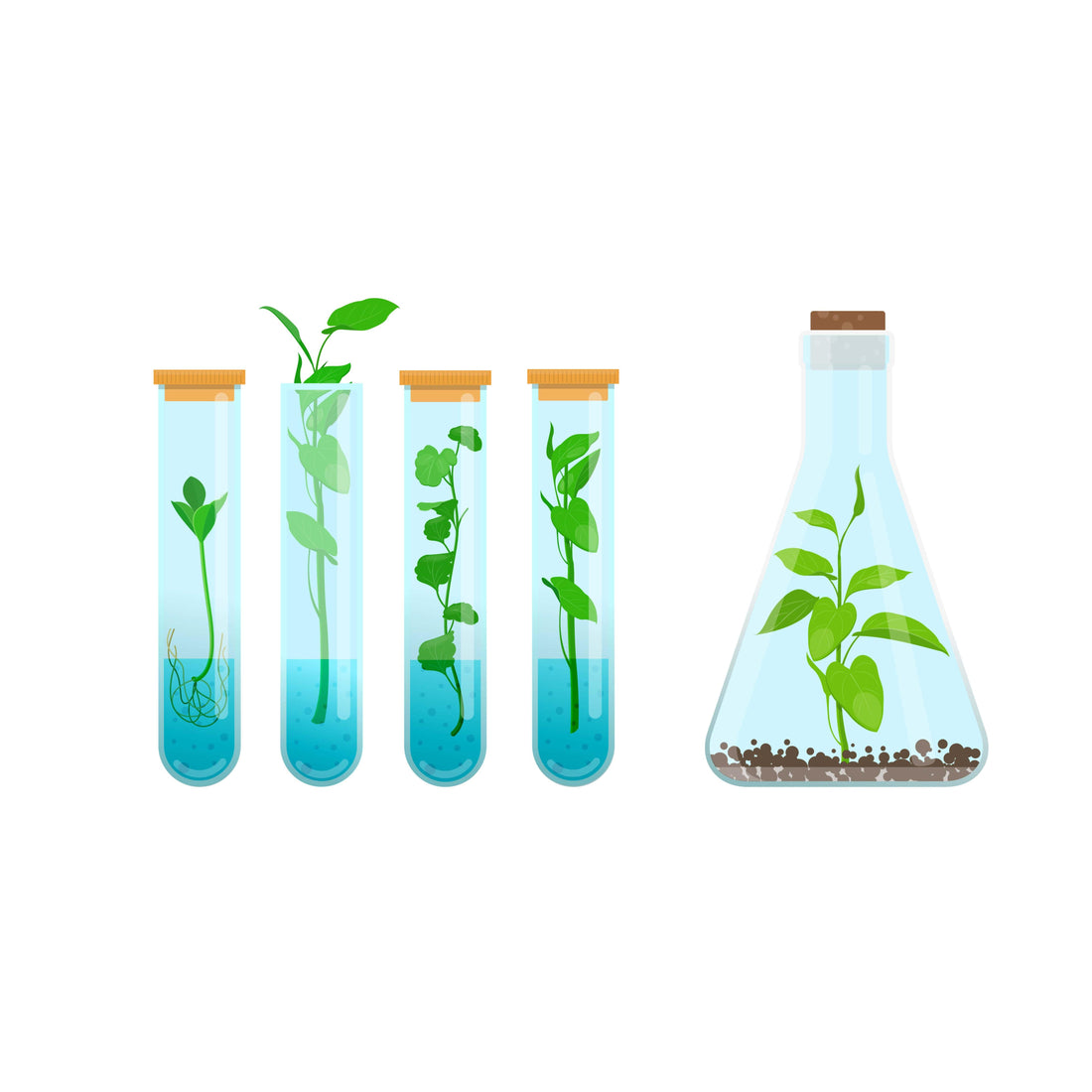
For Beginners: Commonly used words in tissue culture (Part-2)
As a content and community manager, I leverage my expertise in plant biotechnology, passion for tissue culture, and writing skills to create compelling articles, simplifying intricate scientific concepts, and address your inquiries. As a dedicated science communicator, I strive to spark curiosity and foster a love for science in my audience


Introduction
In the first article of this subject, we have discussed twenty commonly used terms in tissue culture. The terms are essential to help you with the subject, related articles, and videos on tissue culture—wherever lab scientists or writers use technical terms. In this series, we are adding more words to the tissue culture glossary for you that you can refer to any time you want. So, let’s begin.
- Plant growth regulators or plant hormones: Naturally grown plants synthesize some hormones for their growth and development. But, in lab conditions, where plant regeneration is achieved using a few tissues, hormone production for plants becomes a tough business. In this situation, plant growth regulators are externally supplied to the growing plants for the regeneration of plant organs. The hormones majorly used in tissue culture are auxin and cytokinin.
- Abscisic Acid: It’s a plant hormone, involved in several developmental processes of plants including seed and bud dormancy, the control of organ size, and stomatal closure.
- Cytokinins: They are growth hormones responsible for cell division in plants’ roots and shoots. For tissue culture purposes, you can purchase cytokinins like Benzylaminopurine (BAP) and Kinetin from here.
- Gibberellic Acid: It’s a plant growth hormone responsible for stimulating both cell division and elongation in leaves and stems. The effective hormones for your cultures are available here.
-
Auxin: It’s a plant hormone required in plants for cell elongation and adventitious root formation.
 At Plant Cell Technology purchase auxins like Indole-3-Acetic Acid (IAA) and Indole-3-Butyric Acid (IBA) at a much more affordable cost.
At Plant Cell Technology purchase auxins like Indole-3-Acetic Acid (IAA) and Indole-3-Butyric Acid (IBA) at a much more affordable cost. - PPM: Plant preservative mixture (PPM) is a chemical mixture used in tissue culture media to prevent any kind of contamination from cultures. It’s a trademark product of Plant Cell Technology that you can easily purchase from its store. It’s very effective in protecting your culture from microbe attacks.
- Agar: It’s a jelly-like substance, used as a solidifying agent in the tissue culture media. Agar supports the proper growth and development of plants.
- Autoclave: It’s a machine that uses steam under pressure to kill microbes and sterilize materials including vessels, distilled water, and culture media.
- Haploid: When a cell contains a single set or half the total number of chromosomes, it’s called haploid.
- Diploid: When a cell contains a complete set or the total number of chromosomes, it’s called a diploid.
- Embryogenesis: The process of initiation, formation, and development of an embryo is known as embryogenesis.
- Organ culture: The process of culturing a part, or the whole plant organ on tissue culture media, for the regeneration of the whole plant, is known as organ culture.
- Organogenesis: The process of transformation of a mass of cells into complete plant organs is called organogenesis. Uner in vitro conditions, it’s the demonstration of natural organ form or function or both.
- Meristem culture: It’s the process of culturing dome-like structure—generally excised from shoot apex—under in vitro conditions. Its major application is in the elimination of viruses and related pathogens.
- Shoot Tip Culture: It’s the process of culturing the terminal portion (shoot apical meristem with 3-4 primordial leaves) of the plant shoot under in vitro environment.
- Protoplast: A plant cell without its cell wall is known as a protoplast.
- Embryo rescue: It’s an in vitro technique used to assist in the development of weak or immature embryos into viable plants.
- Viable: Plants or cells capable of germinating, living, growing, and developing in some specific environment are termed viable.
- Vegetative propagation: It’s the process of multiplication or asexual reproduction of plants from their vegetative parts, like stems or leaves, is known as vegetative propagation.
- Suspension Culture: It’s a type of culture in which cells or tissues multiply or divide when agitated in a liquid medium.
- Axillary bud: An embryonic and organogenic bud located in the axil of the leaf.
- Cultivar: It refers to a variety of plants selected for their desirable characteristics that are maintained during propagation.
- Ex Vitro: It’s cultivating or growing plants outside the lab in the natural environment. In tissue culture, it’s used when plants are transported from lab conditions to soil or potting.
- Acclimatization: It’s the process of adaptation of plants to a change in their environment. It’s a fourth and last stage in tissue culture when plants after rooting are potted in a peat moss mixture to assist in their acclimation to the natural environment.
- Filter Sterilization: It’s the process of sterilizing liquid by passing it through a filter having pores so small that it prevents the passage of microorganisms or microbial spores. In plant tissue culture, heat-labile plant hormones are sterilized using this technique.
- Plant Hardening: It’s another term of acclimation. It means adapting plants to outdoor conditions by gradually withholding water, lowering the temperature, increasing light intensity, or reducing the nutrient supply.
- Phenolic exudation: In tissue culture, the exudation or oozing of an oxidized phenolic compound from the cultured tissues into the culture media is known as phenolic exudation. It causes browning of the explant or media leading to growth inhibition of the cultured plants.
- Propagule: Any structure that has the capability to give rise to a new plant by asexual or sexual reproduction, including seeds, leaves, buds, etc.
- Vitrification: It’s a physiological malformation (glassy appearance) of cultured plant tissues that affects the shoot multiplication and culture vigor.
- Culture Vessel: It’s a container used to cultivate plants inside the lab environment.
With this, we have covered some commonly used tissue culture terms. Let us know if there are any other specific terms you are looking for and we have missed them out in this glossary. We will be delighted to help you with any questions or queries.
In order to further assist you with your tissue culture processes, links to the commonly used materials have been provided. Do check them out!
Happy Culturing!!
Source: Giphy
Blog Categories
View by Level
Popular Blogs

6 Plant Tissue Culture Books to Keep Learning
Introduction Most of us are fans of books when it comes to learning a topic in detail and in a...
Read More
New Technical Agar Vs Supreme Agar
Introduction What’s the secret element that supports and holds plants in vitro? Not sure? It’s the solidifying agent. Solidifying agents...
Read MoreSubscribe to Our Newsletter







Join the conversation
Your email address will not be published. Required fields are marked